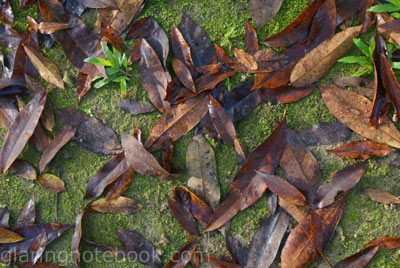
The Sony Alpha 900 is launched!
Finally, the flagship model from the Sony Alpha line was officially announced, with a headlining full-frame 24.6 megapixel sensor!
It is, in most ways, very alike to my A700 in handling, ergonomics and button layout. Killer features like Quick Navi and Dynamic Range Optimization stay in.
What’s Great:
HUGE VIEWFINDER
Sony Alpha 900 = 100% coverage, 0.74x magnification of 35.9x24mm = 26.566×17.76mm
Canon EOS 1Ds MkIII = 100% coverage, 0.76x magnification of 36x24mm = 27.36×18.24mm
Honestly, it would be hard for me to tell the difference between 1 millimeter of viewfinder size. What more with such a difference in price (in favor of the Sony.)
Micro Auto Focus Control
Micro auto focus control for up to 30 different individual lenses (it can tell between one 50mm F1.4 and another, apparently!)

Intelligent Preview
It takes a sample shot, lets you tweak WB, exposure, aperture, shutter speed and even DRO with the changes being shown on screen. Tweaking DRO is by far the coolest thing to see! Of course, the best application for this is tweaking WB, and getting dirty with Kelvin values and Color Correction Filter factors. Unfortunately there’s no way to save this picture even if you captured the moment.
True Mirror Lock-up in Drive mode
Landscape artists really appreciate this.
User Changeable Focus Screen
Now I can put a Type M or Type L screen by myself, and change the appropriate setting in the menu.
Selectable APS-C Mode
You can choose to shoot an APS-C sized image when a full-frame lens is mounted at 11 megapixels.
Memory slots 1, 2 and 3
Just like on the Dynax 7, you get quick access to 3 presets.

Peripheral Illumination Control
This comes with Sony Image Data Converter SR3! Allows you to correct vignetting, besides adding Sony’s Dynamic Range Optimization tool.
Weather Sealing
Sony notes that it is not waterproof or splashproof though.
Compatible Power
It uses the Sony NP-FM500H, the same battery used for the A200, A300, A350 and A700.
Consistency – Spot Meter AEL Toggle is still there! I use this often to spot meter off a subject.
Release without lens is still there! (Some feared that the A900 would not work with M42 lenses in Aperture Priority, like the A200/A300/A350, forcing you to set the shutter speed to match the meter in Manual Exposure mode.)

Parallel Link Mirror Box
The mirror lifts upwards instead of swinging up. Interesting new mechanism this is; it saves space while giving room for SteadyShot to do its magic on the CMOS sensor.
SteadyShot INSIDE
Sony has since rebranded their sensor-shift stabilization for the A900. In previous mockups, it claimed to have Super SteadyShot. Perhaps, Super wasn’t such a super word to use.
Dynamic Range Optimizer
Like the A700, with off, on, advanced auto, and 5 custom levels. This is supposedly tamer than the A700’s, which is a pity; I am a big fan of the A700’s DRO Level 5.
Basic Top LCD
Unlike the complex top LCDs on most dSLRs, this only shows you basic shooting information and whatever settings you’re changing. Tap ISO and you see only the ISO in large LCD letters. This is probably the same as what you see in the viewfinder.
The reason why professionals want this is for bright sunny days and real dark places where the rear LCD’s light would be too distracting. Of course, I never needed it, because I could find all the information inside the A700 viewfinder when I change settings.
Yep, the top LCD shows oooH in High Speed Continuous Drive Mode just like in the viewfinder.
Built-in Eyepiece Shutter
Every professional camera’s gotta have one.

What’s Improved Over The A700:
– You can now switch between CF and MS card using QuickNavi (previously, you were forced to use the Menu, even though the CF/MS icon was on the QuickNavi screen.)
– exposure bracketing can now be set to 2 stops (until the A700 V4 firmware was leaked, we were limited to 0.7 stops). The A700 with V4 firmware can do this anyway.
– repositioned PC Sync port cover. Mine on the A700 is a flapper; the strap pulls it off often.
Bummers:
– no Live View (even as a manual-focus implementation)
– AF sensors 8 lines, 1 double-cross, 10 assist… but they’re not very spread out, and I wish it had more cross sensors. However, there are early claims that these outer sensors with assist sensors may be very effective already.
The double-cross sensor, like on the A700, is an amazing thing though.
– no pop-up flash. I can’t bring this with my Peleng 8mm F3.5 circular fisheye (which would finally be circular on full-frame) to parties and just mix ambient light with flash. Or rather, it would be too heavy!
– no grip sensor… but then, there’s no Eye-Start AF!
I actually used Eye-Start AF, so I’m sad about its omission.
– 1/8000th of a second fastest shutter speed (possibly for reliability, as the Dynax 9’s 1/12000th of a second shutter wasn’t even rated for 100





















































